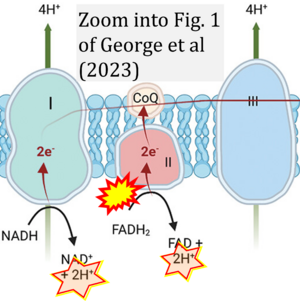George 2023 Platelets
| George CE, Saunders CV, Morrison A, Scorer T, Jones S, Dempsey NC (2023) Cold stored platelets in the management of bleeding: is it about bioenergetics? Platelets 34:2188969. https://doi.org/10.1080/09537104.2023.2188969 |
George CE, Saunders CV, Morrison A, Scorer T, Jones S, Dempsey NC (2023) Platelets
Abstract: When platelet concentrates (PCs) were first introduced in the 1960s as a blood component therapy, they were stored in the cold. As platelet transfusion became more important for the treatment of chemotherapy-induced thrombocytopenia, research into ways to increase supply intensified. During the late 1960s/early 1970s, it was demonstrated through radioactive labeling of platelets that room temperature platelets (RTP) had superior post-transfusion recovery and survival compared with cold-stored platelets (CSP). This led to a universal switch to room temperature storage, despite CSP demonstrating superior hemostatic effectiveness upon being transfused. There has been a global resurgence in studies into CSP over the last two decades, with an increase in the use of PC to treat acute bleeding within hospital and pre-hospital care. CSP demonstrate many benefits over RTP, including longer shelf life, decreased bacterial risk and easier logistics for transport, making PC accessible in areas where they have not previously been, such as the battlefield. In addition, CSP are reported to have greater hemostatic function than RTP and are thus potentially better for the treatment of bleeding. This review describes the history of CSP, the functional and metabolic assays used to assess the platelet storage lesion in PC and the current research, benefits and limitations of CSP. We also discuss whether the application of new technology for studying mitochondrial and glycolytic function in PC could provide enhanced understanding of platelet metabolism during storage and thus contribute to the continued improvements in the manufacturing and storage of PC.
• Bioblast editor: Gnaiger E
Correction: FADH2 and Complex II
- FADH2 is shown as the substrate feeding electrons into Complex II (CII). This is wrong and requires correction - for details see Gnaiger (2024).
- Gnaiger E (2024) Complex II ambiguities ― FADH2 in the electron transfer system. J Biol Chem 300:105470. https://doi.org/10.1016/j.jbc.2023.105470 - »Bioblast link«
Hydrogen ion ambiguities in the electron transfer system
Communicated by Gnaiger E (2023-10-08) last update 2023-11-10
- Electron (e-) transfer linked to hydrogen ion (hydron; H+) transfer is a fundamental concept in the field of bioenergetics, critical for understanding redox-coupled energy transformations.
- However, the current literature contains inconsistencies regarding H+ formation on the negative side of bioenergetic membranes, such as the matrix side of the mitochondrial inner membrane, when NADH is oxidized during oxidative phosphorylation (OXPHOS). Ambiguities arise when examining the oxidation of NADH by respiratory Complex I or succinate by Complex II.
- Oxidation of NADH or succinate involves a two-electron transfer of 2{H++e-} to FMN or FAD, respectively. Figures indicating a single electron e- transferred from NADH or succinate lack accuracy.
- The oxidized NAD+ is distinguished from NAD indicating nicotinamide adenine dinucleotide independent of oxidation state.
- NADH + H+ → NAD+ +2{H++e-} is the oxidation half-reaction in this H+-linked electron transfer represented as 2{H++e-} (Gnaiger 2023). Putative H+ formation shown as NADH → NAD+ + H+ conflicts with chemiosmotic coupling stoichiometries between H+ translocation across the coupling membrane and electron transfer to oxygen. Ensuring clarity in this complex field is imperative to tackle the apparent ambiguity crisis and prevent confusion, particularly in light of the increasing number of interdisciplinary publications on bioenergetics concerning diagnostic and clinical applications of OXPHOS analysis.
Labels:
Stress:Cryopreservation
Tissue;cell: Platelet




